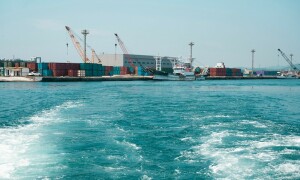PIA showed a healthy growth and positive trend in all indicators critical in evaluating an airline's performance. It will be seen from the figures that while revenue growth has been 11percent and 10 percent in FY 2005 and FY 2006 respectively, or in other words from Rs 57.7 billion to Rs 70.5 billion, all this gain was neutralised by the increase in fuel prices in the last two years.
This was coupled with the increase in interest rates and interest payments due because of the induction of new aircrafts like the Boeing 777's and the ATR's into the PIA fleet. Had this not been so, and the fuel prices had remained constant at the FY2004 level, PIA would have posted a massive Rs 4.12 billion in profit in the last two years.
However, that was not to be the volatile, unpredictable and almost indifferent nature of the hike in fuel prices was a severe blow to the entire airline industry that cumulatively cost it USD 46 billion extra in fuel cost in five years from 2001 to 2005. Most airlines are still recovering from this unavoidable burden.
In PIA this figure increased from 31percent 2004 to 41percent in 2005 going up to 47percent in 2006 and this percentage is of the total revenues earned. This phenomenal increase is much higher then the industry average of 31percent. In monetary terms this meant that PIA spent Rs 34.1 billion on fuel in 2006 as compared to Rs 19.1 billion in 2004 and Rs 26.9 billion in 2005 showing an Increase of 26.8percent.
Similarly, compared to 2005, the interest cost increased by an additional Rs 2 billion to Rs 4.8 billion, which again was a 71,percent increase over last year. On top of all this, there was a substantial cost increases in aircraft chartered for meeting scheduled and Hajj traffic, engineering and maintenance, aeronautical and flight handling, selling and distribution cost.
The loss to the airline due to these factors would have been very great had them not been a positive trend in all the performance. In sheer performance terms the airline carried 5.7 million passengers in 2006 as compared to 5.5 million passengers in 2005.
This is very significant because whereas the overall passenger market increased by 3.3 percent, PIA achieved a growth of 4.4 percent. Passenger yield increased by 6.1percent and the seat factor stood at 71.4percent in 2006. In the year 2006 the load factor increased from 52.5 in 2004 to 62.4. Cargo yield increased from Rs 3.6 in 2004 to Rs 4 in 2006.
Aircraft utilisation was below par due to the grounding of Fokker aircraft and the as yet uncompleted new aircraft induction. There were 48 aircraft in 2004 whereas there were only 39 aircraft in 2005 and 40 in 2006. The average age of the PIA fleet was 21 years in 2004. Today, in April 2006, the average age of the fleet is 16 years.
By the end of June 2007 the average age of the fleet will further reduce to 11 years. The number of employees was reduced from 19,312 to 18,258 the aircraft to employee ratio still remained much higher at above 400, compared to the international average of 150 employees per aircraft.
BR100
12,588
Increased By
72.3 (0.58%)
BR30
37,879
Decreased By
-72.9 (-0.19%)
KSE100
117,316
Increased By
414.5 (0.35%)
KSE30
36,116
Increased By
183.7 (0.51%)




















Comments
Comments are closed.